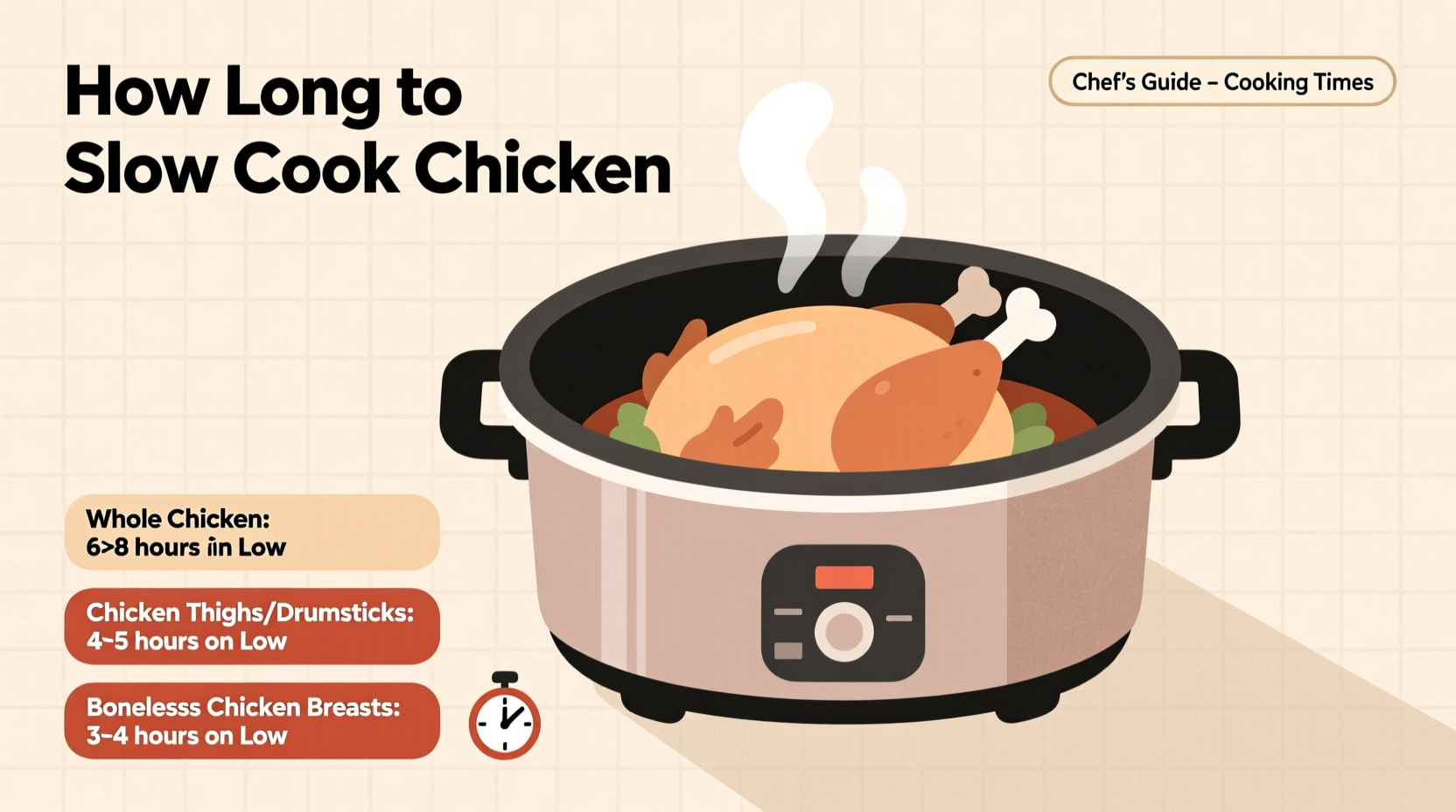Discover exactly how long to slow cook chicken for perfect results every time—no more dry, stringy poultry or unsafe undercooked meals. This comprehensive guide delivers precise timing based on cut, cooker size, and settings, plus science-backed food safety practices trusted by professional chefs.
Understanding Slow Cooker Settings and Temperatures
Slow cookers operate at two primary settings, each creating different cooking environments. The LOW setting maintains 190-200°F (88-93°C), ideal for tenderizing tougher cuts through gentle, prolonged heat. HIGH setting reaches 280-300°F (138-149°C), significantly reducing cooking time while still maintaining moisture. Contrary to popular belief, switching from LOW to HIGH doesn't simply cut time in half—it changes the cooking dynamics. For chicken, HIGH setting cooks approximately 30-40% faster than LOW, not 50%, due to the exponential relationship between temperature and cooking speed.
| Chicken Cut | LOW Setting | HIGH Setting | Minimum Internal Temp |
|---|---|---|---|
| Boneless breasts (1.5 lbs) | 3-4 hours | 2-2.5 hours | 165°F (74°C) |
| Bone-in thighs (2 lbs) | 5-6 hours | 3.5-4 hours | 170°F (77°C) |
| Whole chicken (3-4 lbs) | 6-8 hours | 4-5 hours | 165°F (74°C) |
| Shredded chicken base | 4-5 hours | 2.5-3 hours | 165°F (74°C) |
Food Safety: Non-Negotiable Temperature Guidelines
The USDA Food Safety and Inspection Service mandates that all poultry must reach a minimum internal temperature of 165°F (74°C) to eliminate harmful bacteria like salmonella and campylobacter. This isn't optional—undercooked chicken causes approximately 1 million foodborne illnesses annually in the United States alone. Always use an instant-read thermometer inserted into the thickest part of the meat, avoiding bones. For dark meat like thighs, some chefs prefer 170-175°F for optimal tenderness, as the higher fat content prevents drying at these temperatures.
Factors That Impact Your Cooking Time
Your specific slow cooker model significantly affects timing. Newer programmable models maintain more consistent temperatures than older analog units. A 3.5-quart cooker heats faster than a 7-quart model with the same ingredients. Always account for:
- Starting temperature—chilled chicken adds 30-60 minutes to cooking time
- Layering technique—denser items on bottom cook more evenly
- Liquid ratio—maintain at least 1 cup liquid for 2 lbs chicken
- Lid openings—each peek adds 20 minutes to cooking time
Pro Techniques for Perfect Results Every Time
Professional chefs achieve consistently tender slow-cooked chicken by following these evidence-based methods:
- Pat dry before cooking—moisture creates steam that prevents proper texture development
- Add acidic components later—tomatoes or vinegar added in last hour prevent meat fiber breakdown
- Remove breasts early—boneless breasts become dry if cooked beyond 4 hours on LOW
- Use the carryover cooking effect—chicken continues cooking 5-10°F after removal

Troubleshooting Common Issues
Dry chicken? You've likely overcooked boneless breasts or used insufficient liquid. For future batches, reduce time by 30-60 minutes and maintain proper liquid levels. Undercooked portions? Check your slow cooker's actual temperature with a separate thermometer—many units run cooler than labeled. If needed, transfer to oven at 350°F until reaching safe temperature.
When Slow Cooking Isn't Appropriate
Not all chicken preparations suit slow cooking. Boneless, skinless breasts exceeding 1.5 inches thickness often cook unevenly in slow cookers. Extremely lean preparations with minimal liquid (<1 cup per 2 lbs chicken) risk drying out. For these scenarios, consider alternative methods like sous vide or pressure cooking which offer more precise temperature control for delicate proteins.











 浙公网安备
33010002000092号
浙公网安备
33010002000092号 浙B2-20120091-4
浙B2-20120091-4